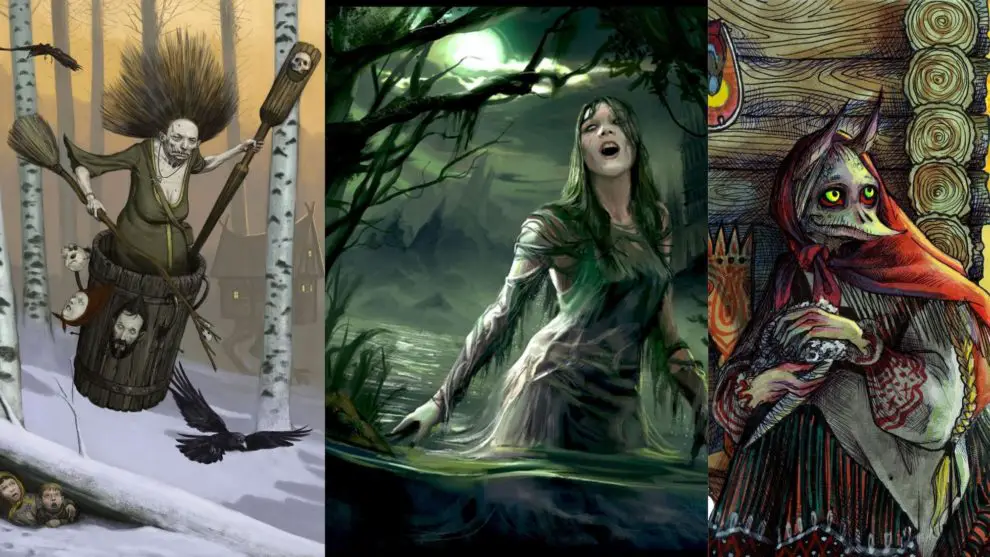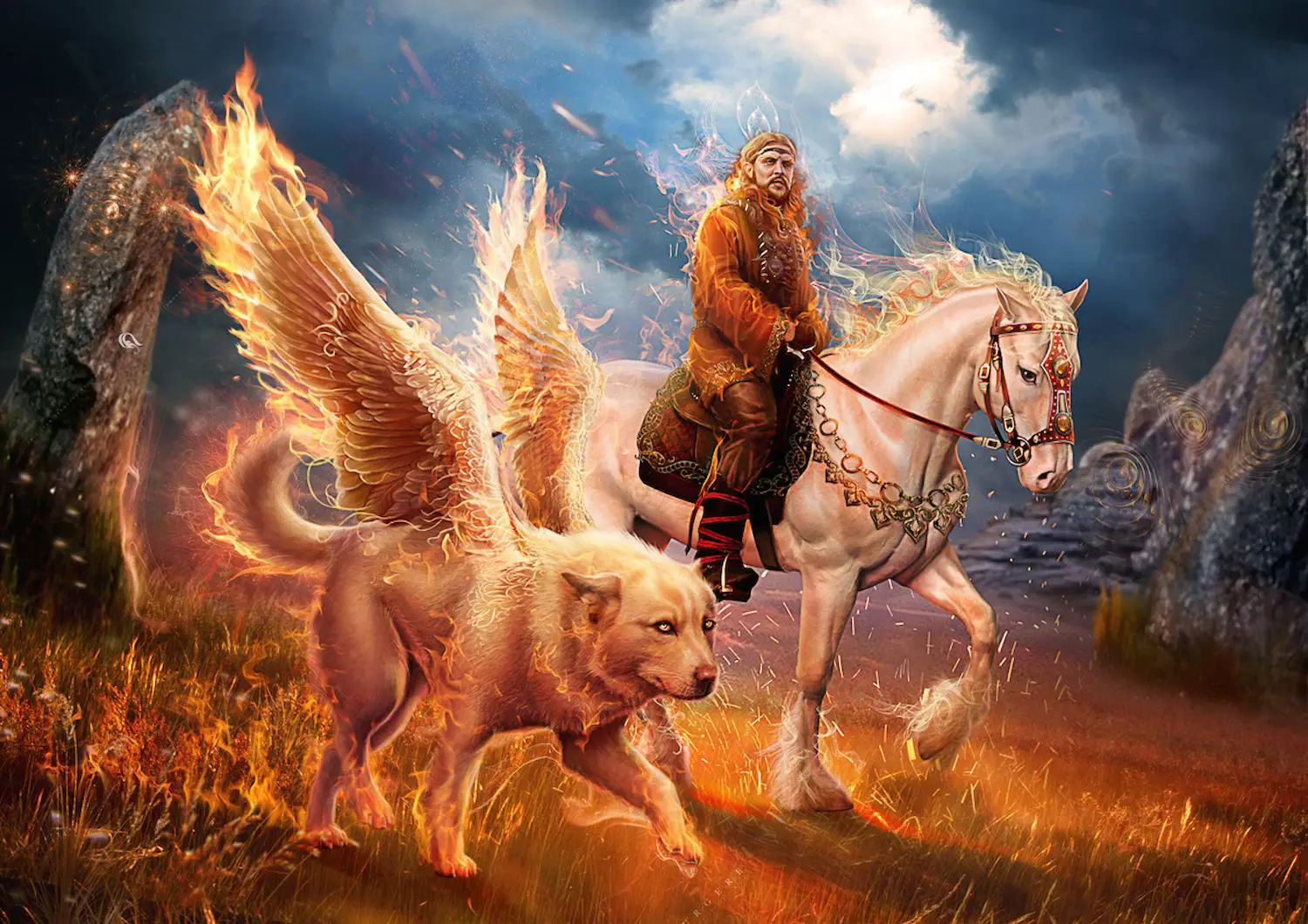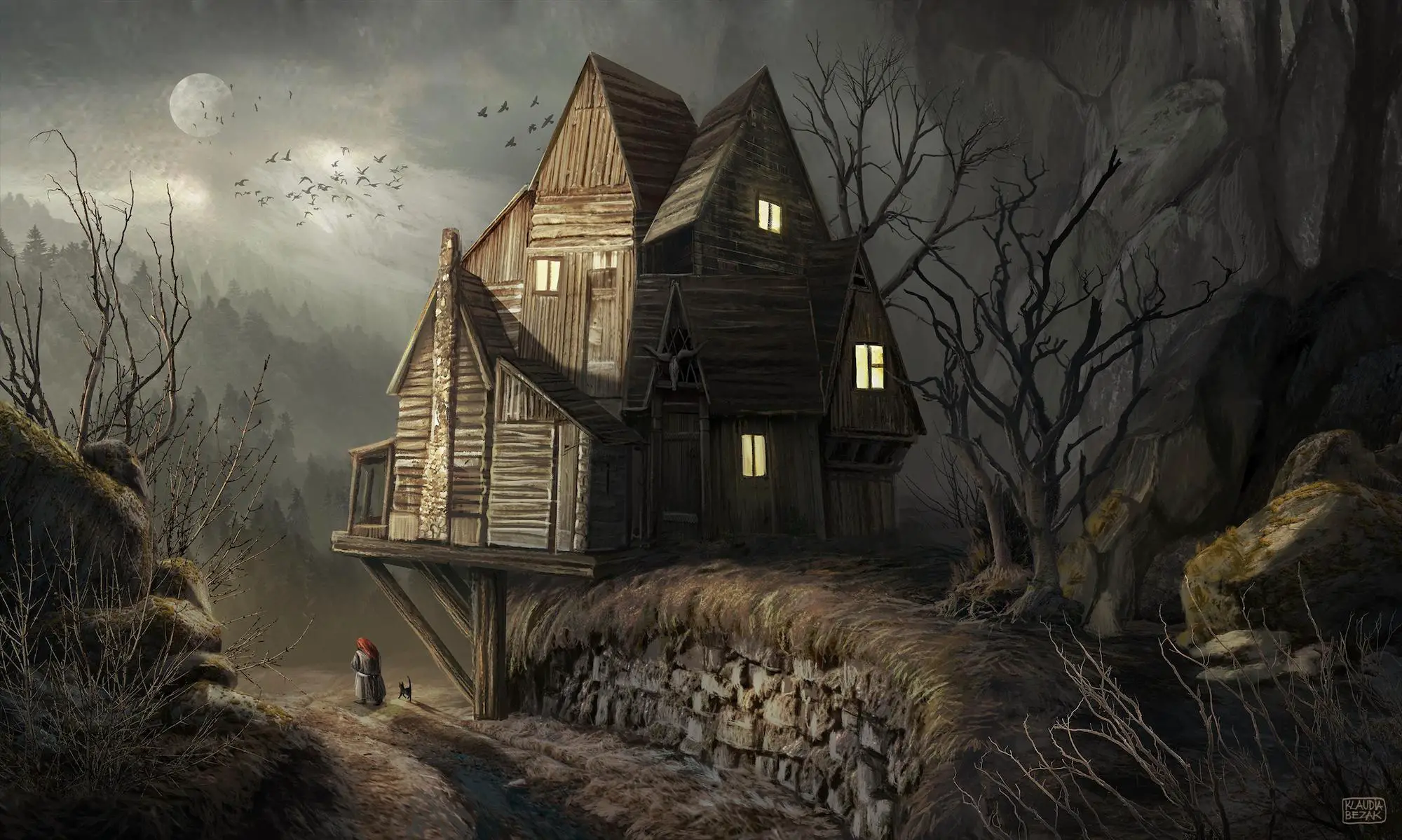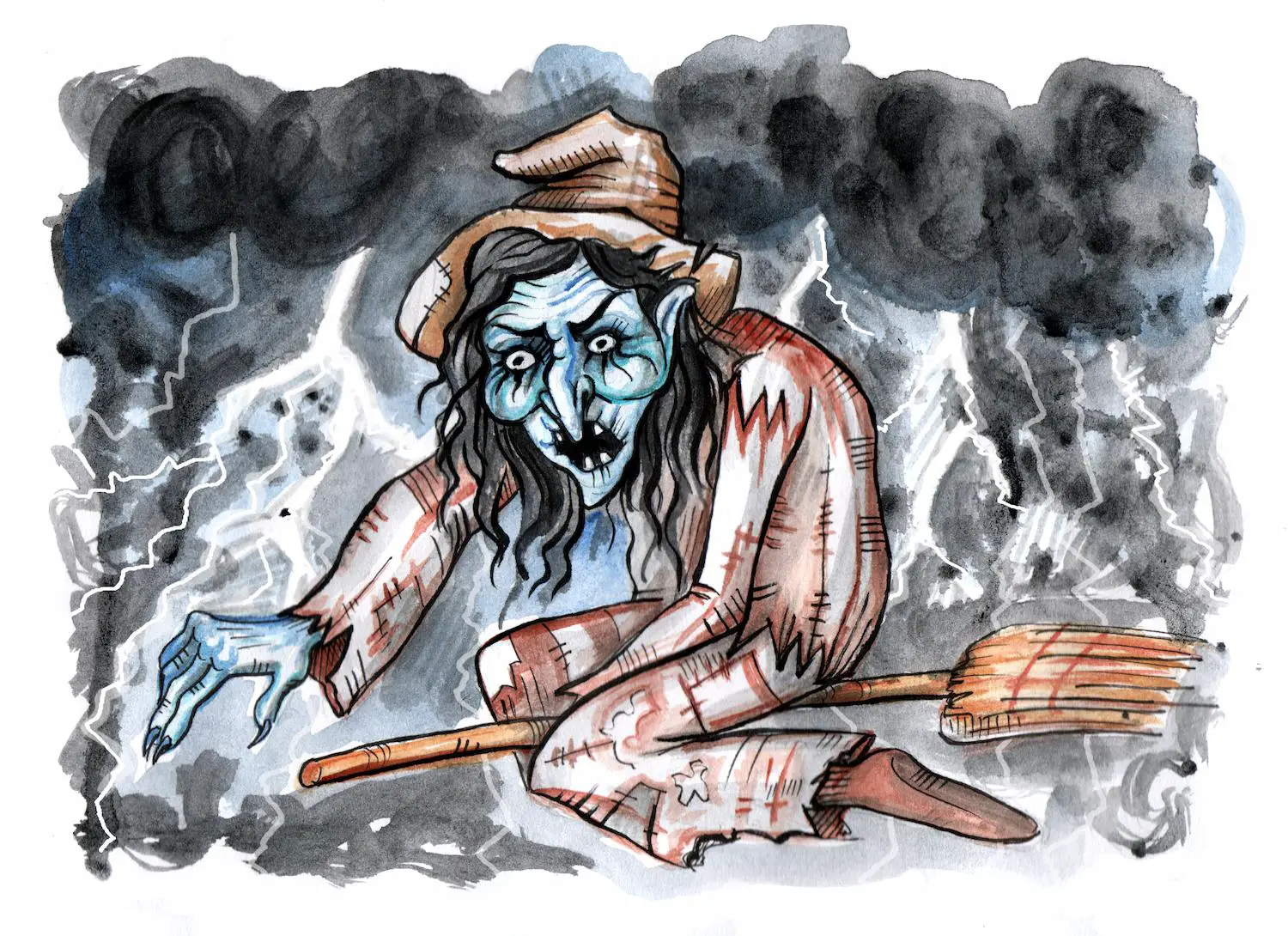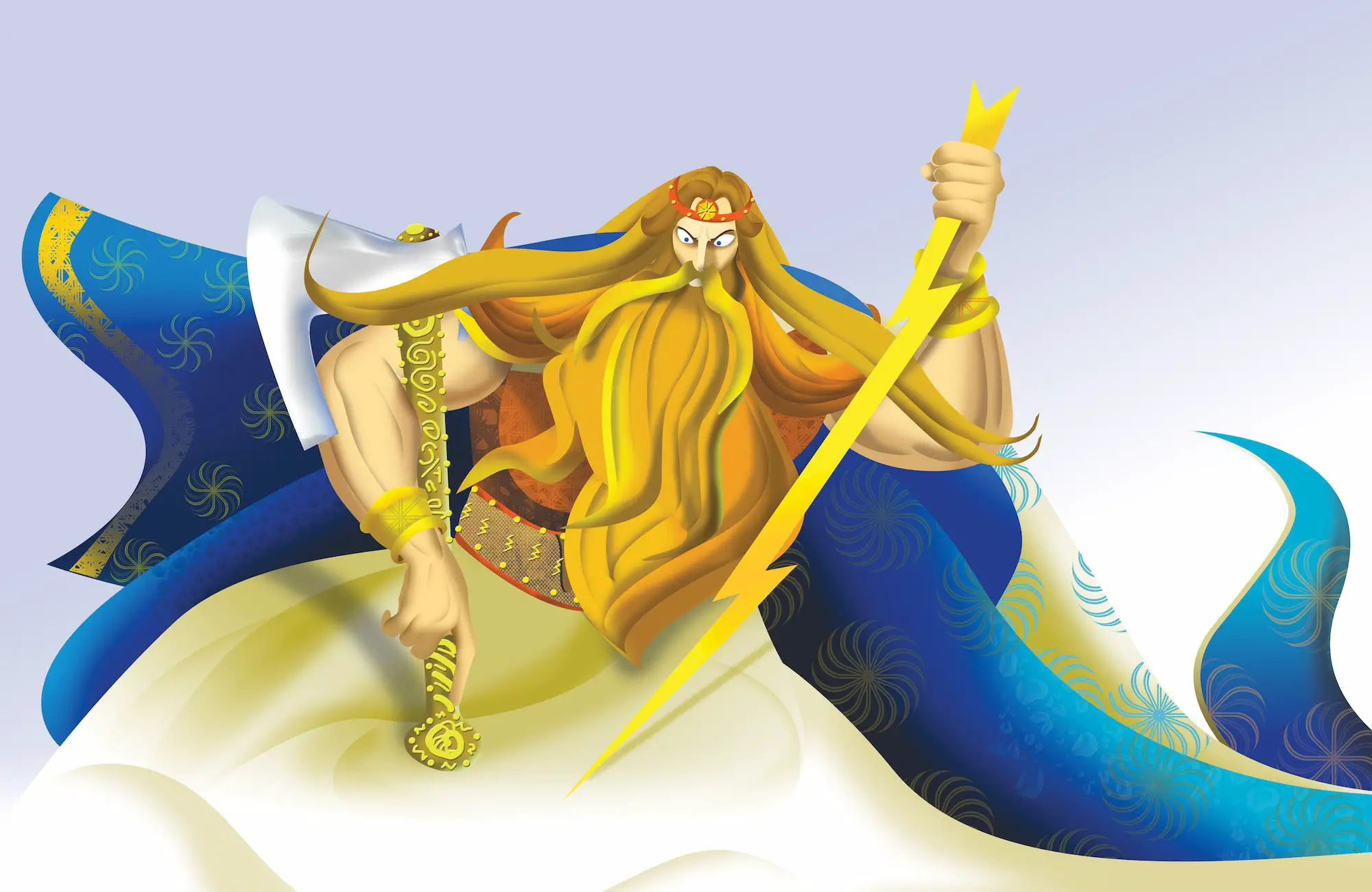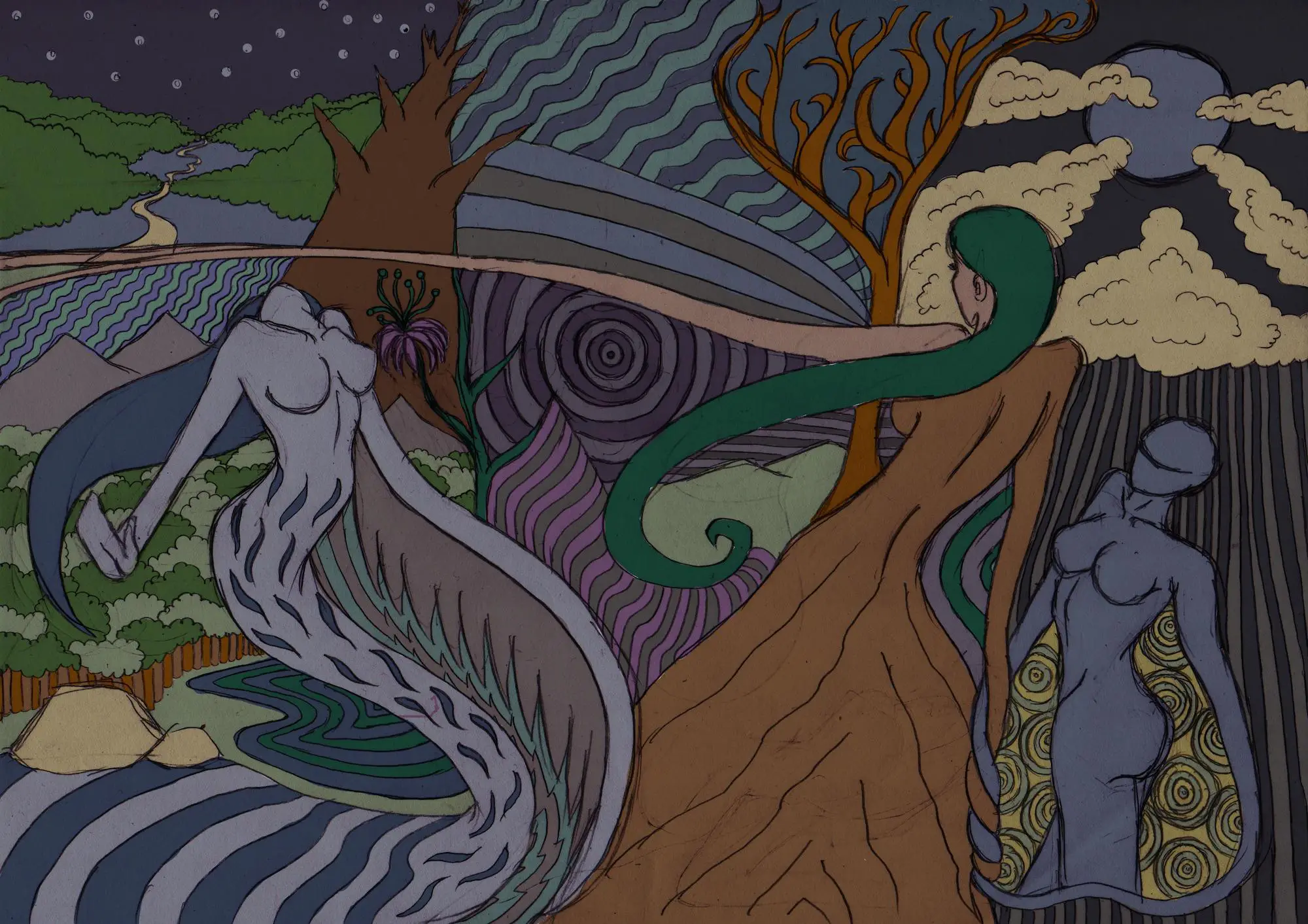The ancestors of today’s Russians were the ancient Slavs whose beliefs were devoted to nature and its forces. Those beliefs affected life, prosperity, and their wellbeing in general.
Ancient Russians believed that nature and its surroundings are full of supernatural creatures. They believed that those creatures will bring them luck, curse their fate, protect their home or help them face life challenges.
These beliefs created these folk tales and legends in Russian mythology, i.e. Russian folklore. There are a variety of Russian creatures and Russian monsters that are the focus of interest of many Slavic folklorists, even today.
The beliefs of the ancient Russians were built on themes and subjects that were dominant in the mythology of the Slavs and in the Russian fairy tales. However, these are still present in contemporary culture and religious practices in Russia [1].
Table of Contents
Russian Mythological Creatures
Russian folklore originates from the pagan beliefs of the ancient Slavs in the pre-Christian era, which are reflected in Russian fairy tales.
Russian Bylinas
Speaking of Russian mythology creatures, it is worth mentioning the bylinas as one of the material proofs of Slavic mythology.
The bylina is a traditional Russian oral epic poem that is loosely based on historical facts but full of fantastic elements and hyperboles.
The word “bylina” means “something that was or something that used to be”.
Most of the historians of East Slavic and Russian folklore believe that this genre arose during the Kievan Rus, around the 10th-11th century.
The oldest bylinas in the so-called Kievan cycle were recorded in the Russian North. More specifically, in the historically significant area of Karelia [2].
Translated Russian Folklore
Russian fairy tales were translated into English at the end of the 19th century by the British scholar and translator William Ralston, in his work “Russian Folk Tales” and the writer Edith Hodgettis in “Tales and Legends from the Land of the Tzar”.
Poetical Interpretations
Some Russian poets took Slavic mythology as the basis of their creative work, creating poetical interpretations of the classic Russian fairy tales. They used Slavic mythological creatures to create a world of imagination and excitement.
The founder of modern Russian literature, Alexander Pushkin also created original fairy tale poems that became very popular.
Mythological Creatures and House Spirits
The spirits, fairies, and demons were seen as masters of forest, field, water, or home. These were often represented either as old men or as supernatural creatures that protected humans, their communities or were ruled by malevolent forces, i.e. the devil.
The pagan Russian Slav created fairy tales that describe several types of supernatural beings. All those fairy tales were classified by folklorists.
Patrons of the Household
Domovoi
Among the various creatures, there was the House Elf, also known as Domovoi, for whom it was believed to look like an old man who hides in your house but may suddenly appear and curse it.
According to the old belief, if you tempt the wrath of Domovoi, he will curse your house which will result in bad luck and epic misfortune.
Domovoi was considered a creature responsible for all domestic prosperity and tranquility.
Dvorovoi
Dvorovoi are male yard spirits. Their name originates from “dvor”, meaning “yard”. Just like domovoi, they are in charge of taking care of the household and its members.
The Dvorovoi was considered happy and calm. When someone would place a shiny object, a slice of bread or sheep’s wool in the stables, they would say to Dvorovoi:
Master Dvorovik, I offer you this gift in gratitude. Please look after the cattle and feed them well.”
Kikimora
In Slavic mythology, the Kikimora is a legendary monster creature that is represented as a female house spirit.
When Kikimora inhabits a house, she lives behind the stove or in the cellar and makes creepy noises that resemble those of house mice.
An interesting fact is that the Kikimora was the first traditional explanation for sleep paralysis in Russian folklore.
Also Read: Slavic monsters
Nature Spirits
The nature spirits were thought to protect humans but they were also associated with the so-called devilish forces of destruction.
Also, the nature spirits were often considered translatable of the “unclean” force of nature, connected to improper burial and unnatural death, i.e. murder.
Most of today’s accounts on nature spirits were collected in the late 19th century as second-hand tales.
Baba Yaga
Baba Yaga is one of the epic creatures of Russian and Slavic mythology overall.
Baba Yaga (also known as Baba Yaya), is the central character in many Russian folk tales. Her story is also present in folklore, i.e. the fairy tales that come from Ukraine and Belarus.
In most of the tales, Yaga is portrayed as an old evil witch, with a mortar or a broom and a pestle, who is preoccupied with chasing, petrifying, and eating little children.
Baba Yaga’s living place is a hut, settled deep in the forest. The door of the hut has horse hooves.
Baba Yaga is often represented as the enemy of children but some stories depict her as a wise woman who poses challenges upon characters in order to help them achieve wisdom.
The Development of Baba Yaga
It is important to mention that, according to Ada Wordsworth, the character of Baba Yaga is the most famous of all Slavic folk characters.
Baba Yaga can be found in stories not only in Russia but throughout Central and Eastern Europe. Wordsworth thinks that in those stories, Baba Yaga lost much of its matriarchal nature after Christianity [3].
Leshy

Leshy is a forest spirit known as the master of the woods.
Even though his character has a versatile appearance in a lot of stories, in all of them Lesy is represented as a male.
In general, Leshy is portrayed as an old man. In some cases, we see him as an animal or a mushroom. Sometimes he even has a tail and wings (like the devil).
The legend of Leshy says that he can appear in different sizes (as a dwarf or even as a giant) and it is this power of transformation that is regarded as his superior quality.
He would fit in his surroundings depending on the height of the plant life in the forest where he lives.
Some tales describe him as a family man with a wife and children, who is living in a harmonious household in a village.
Other legends represent him like a multitude of creatures in a forest. In those stories, Leshy lives in a hierarchy that resembles society.
Leshy can also be mentioned as a character that cannot speak but can only make bird sounds, sounds of rustling leaves, or just clap with his hands.
Finally, Leshy is described as evil or mischievous. It was believed that if you meet him, you will get lost in the woods. Leshy can also make people ill, steal women and children or eat people.
People thought that using a cross could be good protection against him. This was something that classified him as a Christian demon or the devil himself.
Vodyanoy
The Vodianoi is also known as Vodyanoy, a water male fairy from the Eastern and Western Slavic stories that was a spiritual embodiment of the souls of drowned people.
The vodyanoy is a male water spirit that lives at the bottom of seas or lakes. His appearance differs depending on the story.
Just like Leshy, he is portrayed as an old man with a long beard, sometimes white, blue, or even green.
Most of the legends depict him as a creature covered in slime with fish scales or fishtail.
It was believed that Vodyanoy drowns people and mimics voices to lure his victims. It was thought that he changes his appearance for the same purpose.
Some stories present him as a friend to millers and fishermen who bring him offerings as a sacrifice that would provide them good fortune from the waters he lives in.
The Vodyanony is seen as an evil creature that resembles the devil.
Polevoi
The Polevoi is a male spirit of the fields. His appearance is the mirror of his environment, which is the case with all of the natural spirits.
Occasionally, Polevoi is described as a creature with dark skin that has grass instead of hair. Sometimes, he is portrayed as dressed in white attire and accompanied by the wind.
The Polevoi can also appear in different sizes (just like the Leshy), and can either be tall as the summer grass or short as the field stubble when the harvest is over.
The Polevoi’s character is not specifically highlighted as malevolent but he can make people get lost in the fields and, in general, is considered a bad omen.
It was said that the best way to avoid him is to not go to the fields at noon when the sun is too hot.
Poludnitsa
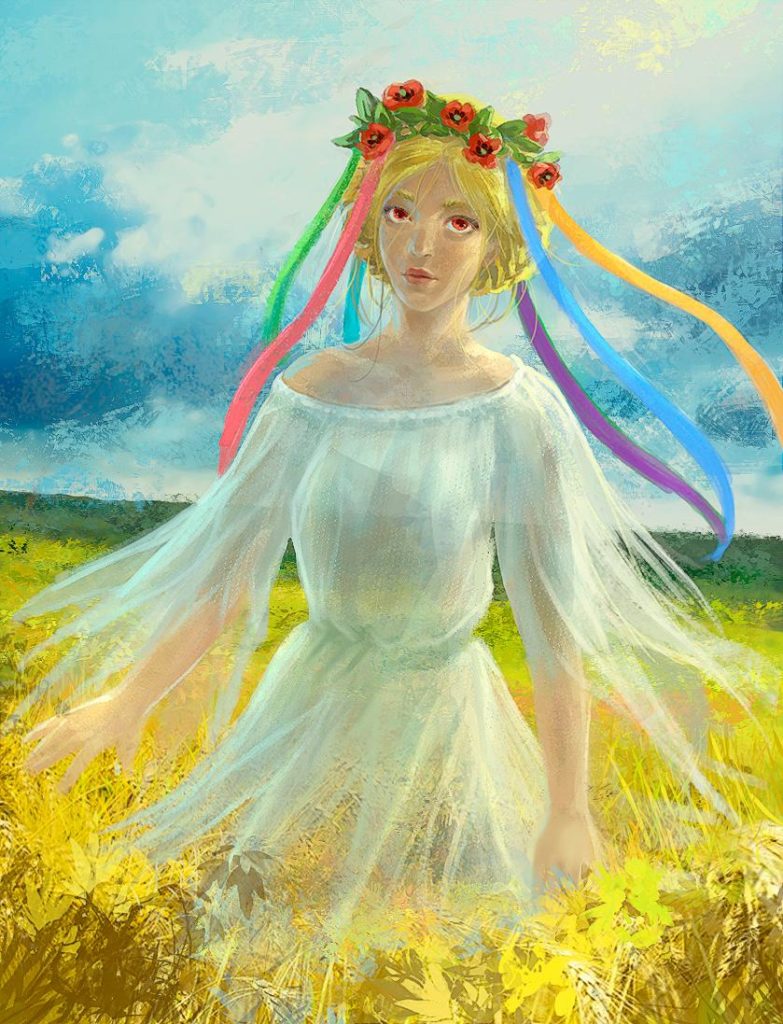
The Poludnitsa is the female field spirit. She is a mythical character that is present in stories of Slavic countries in Eastern Europe.
Poludnitsa was portrayed as a demonic creature that embodied a young woman, dressed in white, who wanders the field and assaults villagers and workers that work at noon. It was thought that she causes heatstrokes and neck aches, or even madness.
It was believed that Poludnitsa appeared in summer, as a cloud of dust, or a creature that carried tools such as a scythe or a shear.
Sometimes she looked like a woman who would meet villagers and tell them riddles that were so complex to answer that she would eventually kill them because they were unable to provide the answer.
Rusalka
Rusalka was a water spirit or a water fairy in Slavic mythology. She was often compared to the concept of a nymph or a mermaid, found in other mythologies.
She is a supernatural spirit that lives near or inside the water and is often malevolent toward people. However, as a mythical character, she was not always presented as such.
The initial versions of the pagan tales represented her as a benevolent spirit. The later versions portrayed Rusalki as dangerous, dead beings and cursed spirits that looked like young women.
The Rusalka spirits were considered to be the souls of young women who drowned or were murdered in or near lakes. They were represented as ghosts with bodies made of water who sought to avenge their deaths or wandered around the haunted lakes.
Zmey Gorynych
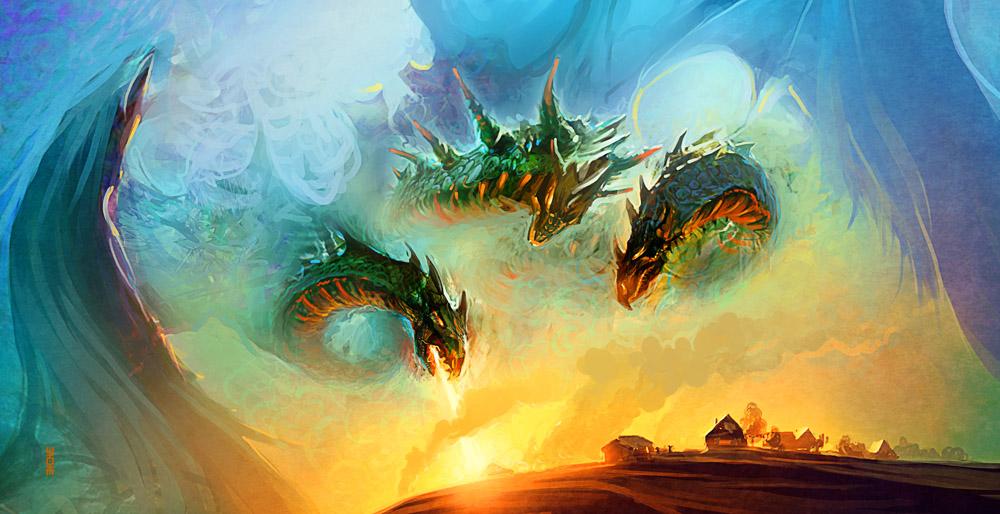
The name of this mythological creature means “Snake of the Mountains”.
Zmey Goynych is the Slavic version of the concept for a dragon, represented as a polysepalous creature that can talk.
The word “zmey” means “dragon”. The zmey as a character in Russian tales is male and lives in mountains or forests.
The body of the Russian zmey is described as being covered with red or green scales and. They said that zmey had iron claws.
Goynych could shapeshift and change its appearance or his behavior. In some tale versions (like “The Milk of Wild Beasts” by Ivan Tsarevich) he would turn into a handsome young man.
In other versions, zmey would take the form of an object and become a broom or a fork, and as such detect the presence of an enemy.
Thus character occurs also in the literature and wonder tales of Ukraine as well as in the compilation of the Slavist and ethnographer Alexander Afanasyev “Narodnye Russkie Skazki” [4].
Sources
- https://www.britannica.com/art/Russian-literature
- https://culture.pl/en/article/what-is-known-about-slavic-mythology
- https://www.pushkinhouse.org/blog/2020/5/13/a-brief-history-of-russian-folklore
- https://www.routledge.com/The-Routledge-Dictionary-of-Gods-and-Goddesses-Devils-and-Demons/Lurker/p/book/9780415340182







